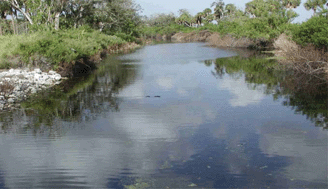Temporal and spatial variations of nutrients in the Ten Mile Creek of South Florida, USA and effects on phytoplankton biomass
Abstract
High median concentrations of total P (TP, 0.272 mg L−1),

* Corresponding authors
a
University of Florida, Institute of Food and Agricultural Sciences, Indian River Research and Education Center, 2199 S. Rock Road, Fort Pierce, USA
E-mail:
zhe@ufl.edu
Fax: +1-772-468-5668
Tel: +1-772-468-3922 ext109
b Institute of Geochemistry, Chinese Academy of Sciences, Guiyang, China
c Department of Fisheries and Aquatic Sciences, University of Florida, Gainesville, USA
d College of Natural Resources and Environmental Sciences, Zhejiang University, Hangzhou, China
High median concentrations of total P (TP, 0.272 mg L−1),

 Please wait while we load your content...
Something went wrong. Try again?
Please wait while we load your content...
Something went wrong. Try again?
Y. Yang, Z. He, Y. Lin, E. J. Phlips, J. Yang, G. Chen, P. J. Stoffella and C. A. Powell, J. Environ. Monit., 2008, 10, 508 DOI: 10.1039/B715026A
To request permission to reproduce material from this article, please go to the Copyright Clearance Center request page.
If you are an author contributing to an RSC publication, you do not need to request permission provided correct acknowledgement is given.
If you are the author of this article, you do not need to request permission to reproduce figures and diagrams provided correct acknowledgement is given. If you want to reproduce the whole article in a third-party publication (excluding your thesis/dissertation for which permission is not required) please go to the Copyright Clearance Center request page.
Read more about how to correctly acknowledge RSC content.
 Fetching data from CrossRef.
Fetching data from CrossRef.
This may take some time to load.
Loading related content
